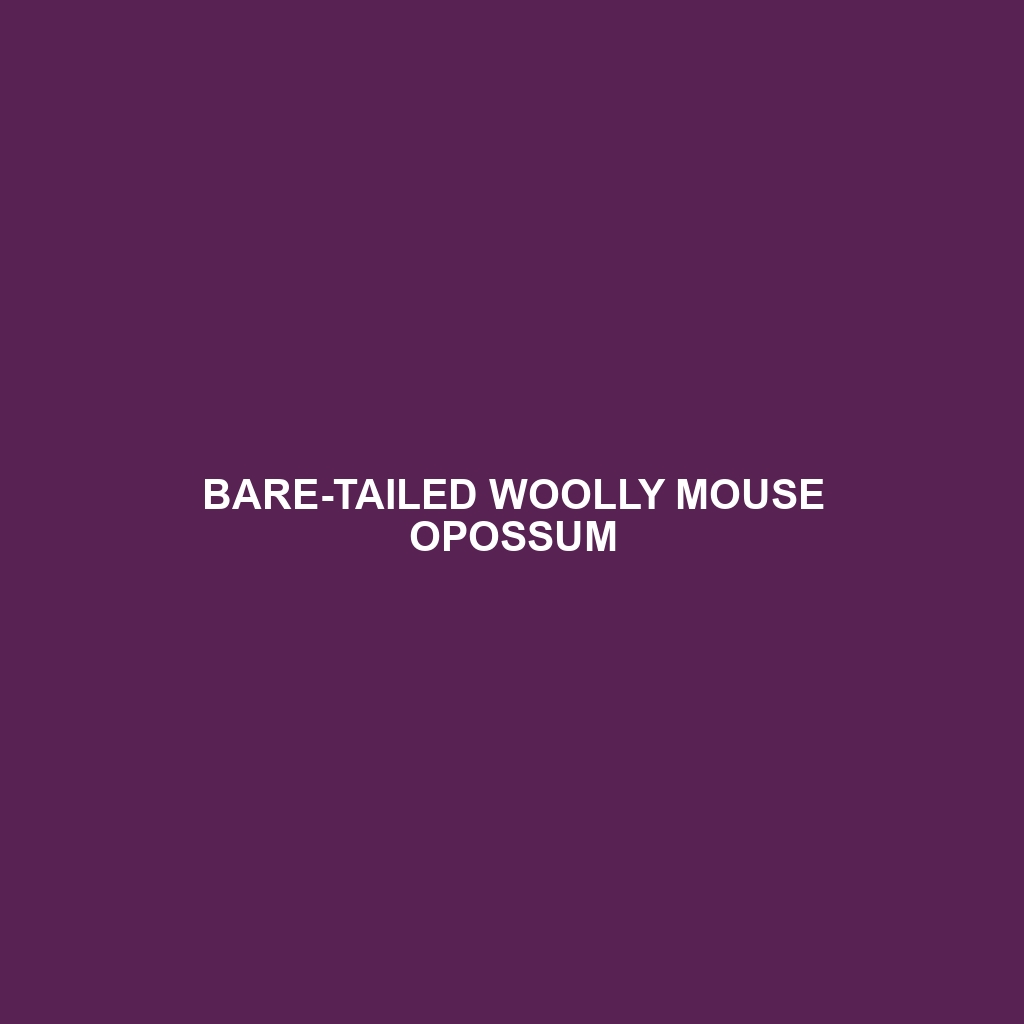Bare-tailed Woolly Mouse Opossum: An Overview
The Bare-tailed Woolly Mouse Opossum (Micoureus paraguayanus) is a small marsupial native to the tropical and subtropical forests of South America. Known for its distinctive bare tail and woolly fur, this nocturnal creature exhibits unique features and behaviors that make it a fascinating subject of study in the world of wildlife.
Physical Characteristics
Size and Weight:
Length: Approximately 10-15 cm (4-6 inches) for the body, with an additional 10-14 cm (4-5.5 inches) for the tail.
Weight: Ranges between 25-40 grams (0.9-1.4 ounces).
Coloration:
Fur: Soft and dense, primarily grey to brown on the dorsal side with a lighter, often white or cream-colored ventral side.
Tail: Distinctly bare on the distal half, which is a characteristic feature of this species.
Special Features:
Ears: Large and rounded, providing excellent hearing capabilities.
Eyes: Prominent and adapted for nocturnal vision.
Paws: Equipped with opposable thumbs, aiding in climbing and handling food.
Behaviors
Social Interactions:
Generally solitary except during the mating season or when a mother is with her young.
Communicates through a series of vocalizations, body language, and scent markings.
Feeding Habits:
Diet: Omnivorous, feeding on fruits, insects, small vertebrates, and occasionally nectar.
Foraging: Primarily nocturnal forager, utilizing its keen senses to locate food in the dark.
Ecological Roles:
Acts as a seed disperser due to its fruit-eating habits, contributing to forest regeneration.
Helps control insect populations, maintaining ecological balance.
Habitats and Adaptations
Habitats:
Found in tropical and subtropical forests, including rainforests, secondary forests, and forest edges.
Prefers dense understory vegetation where it can find ample food and shelter.
Adaptations:
Arboreal Lifestyle: Highly adapted for tree-dwelling, with strong limbs and a prehensile tail that aids in climbing and balance.
Nocturnal Activity: Enhanced night vision and acute hearing to navigate and hunt in the dark.
Camouflage: Fur coloration provides excellent camouflage against the forest floor and tree bark, protecting it from predators.
Conservation Status
Currently not listed as endangered, but habitat destruction and fragmentation pose potential threats.
Conservation efforts focus on preserving forest habitats and mitigating human-induced environmental changes.
Fun Facts
Marsupial Pouch: Unlike some other marsupials, the Bare-tailed Woolly Mouse Opossum does not have a well-developed pouch. Instead, the young cling to the mother’s teats and are carried on her belly.
Climbers Extraordinaire: Their prehensile tails act like a fifth limb, making them adept at climbing and navigating through the forest canopy.
Lifespan: In the wild, they typically live for about 1-2 years, though they can live longer in captivity.
The Bare-tailed Woolly Mouse Opossum is a remarkable example of nature’s adaptability and diversity. Whether you’re a wildlife enthusiast or a casual observer, this small but mighty marsupial is sure to capture your interest with its intriguing characteristics and vital role in the ecosystem.
